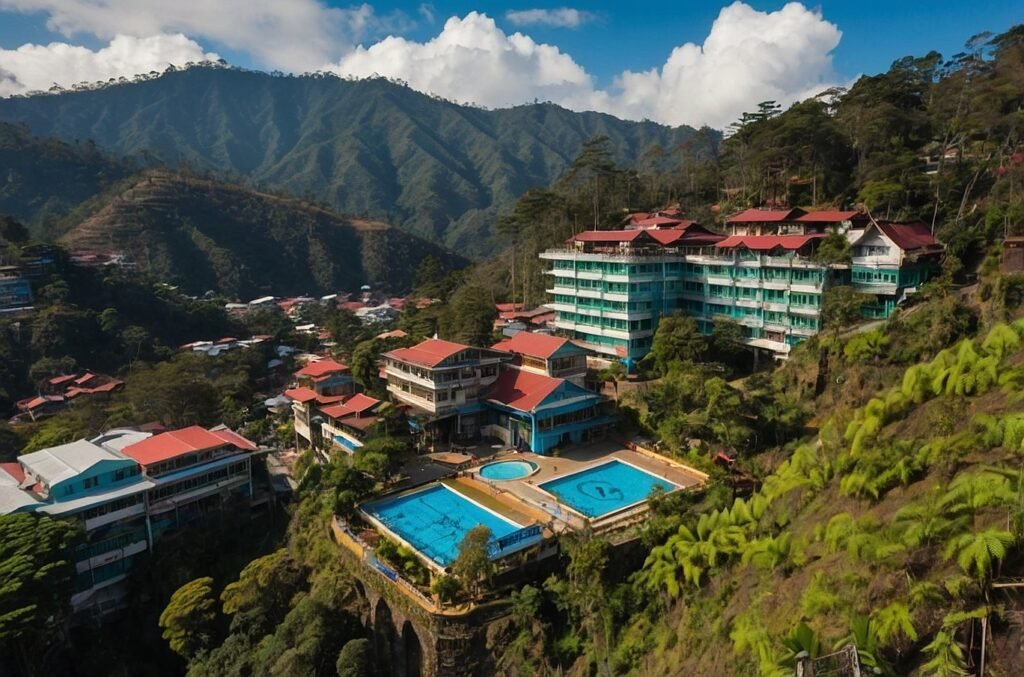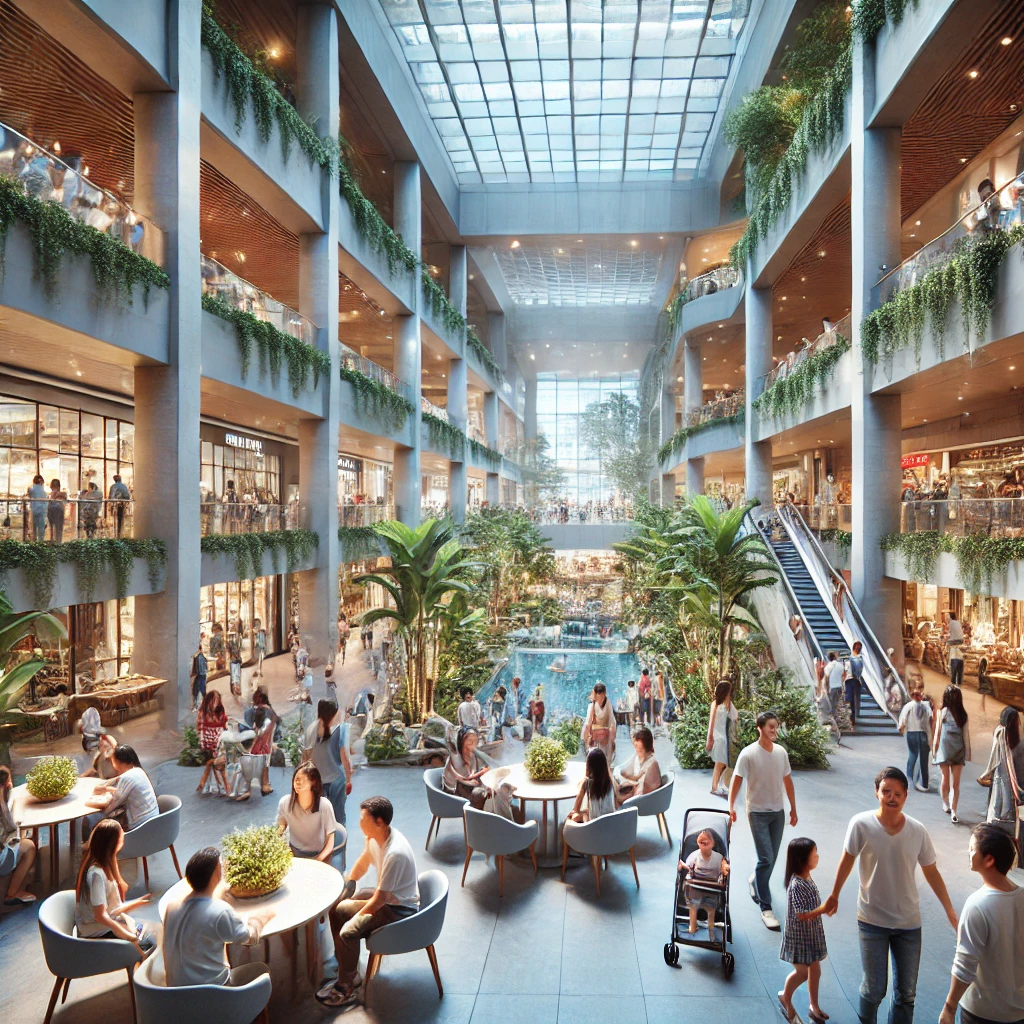Welcome to Baguio, a city that’s as cool as its climate! If you’re looking for a refreshing escape from the tropical heat of the Philippines, you’ve come to the right place. Nestled high up in the Cordillera Mountains, Baguio is a breath of fresh air – literally and figuratively. Known as the “City of Pines” and the “Summer Capital of the Philippines,” this charming mountain retreat has been captivating visitors for over a century. So, grab a sweater (yes, you’ll need one!) and let’s explore what makes Baguio such a unique and beloved destination.
A Brief History: From Tribal Land to Tourist Haven
The Birth of Baguio
Long before it became a go-to vacation spot, Baguio was home to the indigenous Ibaloi people. The area was known as “Kafagway,” meaning “wide open space.” It wasn’t until the American colonial period that Baguio as we know it today began to take shape. In 1900, U.S. Governor-General William Howard Taft visited the area and was impressed by its cool climate. He envisioned a place where government officials could escape Manila’s sweltering heat, and thus, the idea of Baguio as a hill station was born.
The transformation of Baguio into a modern city was no small feat. It involved the construction of Kennon Road, a marvel of engineering that winds its way up the mountains. The road was completed in 1905, opening up Baguio to development and tourism. American architect Daniel Burnham, famous for his work on Chicago and Washington D.C., was commissioned to design the city. His vision of wide streets, parks, and government buildings laid the foundation for Baguio’s unique character.
From Rest and Recreation to Resilience
Baguio quickly became a popular destination for both Filipino and foreign visitors. Its cool climate, pine-scented air, and scenic beauty made it an ideal place for rest and recreation. During World War II, Baguio suffered heavy damage but bounced back with remarkable resilience. The post-war years saw a boom in tourism and education, with the establishment of numerous schools and universities.
Today, Baguio continues to evolve while maintaining its charm. It’s a bustling city of over 350,000 people, yet it still feels like a small mountain town in many ways. The mix of modern amenities and natural beauty makes it a unique destination in the Philippines.
Climate: Cool, Crisp, and Oh So Refreshing!
A Weather Wonderland
One of Baguio’s biggest draws is its climate. While much of the Philippines swelters in tropical heat, Baguio enjoys cool temperatures year-round. Here’s a quick look at the average temperatures throughout the year:
| Month | Average High (°C) | Average Low (°C) |
|---|---|---|
| January | 23 | 12 |
| April | 25 | 14 |
| July | 22 | 15 |
| October | 23 | 14 |
As you can see, even in the warmest months, Baguio stays relatively cool. This makes it a popular summer destination for Filipinos looking to beat the heat. But don’t be fooled – you’ll want to pack a jacket, especially for those chilly evenings!
The Rainy Season: A Different Kind of Beauty
While Baguio is lovely year-round, it’s important to note that it experiences a significant rainy season from June to October. During these months, the city can receive a lot of rainfall. However, this doesn’t mean you should avoid visiting during this time. The rain brings a different kind of beauty to Baguio, with misty mountains and lush greenery. Just be sure to pack an umbrella and enjoy the cozy atmosphere!
Natural Wonders: Pines, Parks, and Panoramas
Burnham Park: The Heart of the City
No visit to Baguio is complete without a stroll through Burnham Park. This sprawling green space in the center of the city is named after Daniel Burnham, the architect who designed Baguio’s layout. The park features a man-made lake where you can rent boats, beautiful gardens, a skating rink, and plenty of areas for picnics and relaxation. It’s the perfect place to spend a lazy afternoon or people-watch as locals and tourists alike enjoy the fresh air.
Camp John Hay: From Military Base to Leisure Destination
Once a rest and recreation facility for American soldiers, Camp John Hay has been transformed into a must-visit destination in Baguio. The former base now houses hotels, restaurants, a golf course, and eco-trails. One of the highlights is the Tree Top Adventure, where you can zip-line through the pine forests for a thrilling view of the surroundings. The camp’s well-preserved pine forests and colonial-era buildings offer a unique blend of nature and history.
Mines View Park: Spectacular Vistas
For breathtaking views of the Cordillera mountains, head to Mines View Park. This observation deck offers panoramic vistas of the surrounding mountains and abandoned mining towns. On a clear day, you can see for miles. The park is also a great place to shop for local souvenirs, including woven textiles and silver jewelry. Don’t forget to try on the traditional Igorot clothing for a fun photo op!
Cultural Delights: Art, Crafts, and Festivals
Tam-awan Village: A Living Museum
Step back in time at Tam-awan Village, a cultural village that showcases the traditional architecture and way of life of the Cordillera region. The village features reconstructed tribal huts from various indigenous groups, art galleries, and regular cultural performances. It’s a fantastic place to learn about the rich heritage of the region and appreciate local art.
BenCab Museum: A Treasure Trove of Filipino Art
Art lovers shouldn’t miss the BenCab Museum, founded by National Artist Benedicto Cabrera. The museum houses an impressive collection of contemporary and indigenous art, as well as Cabrera’s own works. The building itself is a work of art, with stunning views of the surrounding gardens and mountains. It’s a perfect blend of culture and nature that epitomizes Baguio’s unique character.
Panagbenga Festival: Baguio in Bloom
If you’re visiting in February, you’re in for a treat! The Panagbenga Festival, or the Baguio Flower Festival, is a month-long celebration of Baguio’s flowers and the coming of spring. The festival features elaborate flower-covered floats, street dancing, and a variety of cultural events. It’s a riot of color and a testament to Baguio’s vibrant community spirit.
Culinary Adventures: From Strawberries to Ube Jam
Market Madness: Baguio City Market
For a true taste of local life, dive into the bustling Baguio City Market. This sprawling market is a feast for the senses, with sections dedicated to fresh produce, meat, flowers, and dry goods. Don’t miss the chance to sample (and stock up on) Baguio’s famous strawberries when they’re in season. The market is also a great place to try local delicacies like ube jam (purple yam spread) and sundot kulangot (a sticky rice treat with a rather unfortunate name that translates to “nose pick”!).
Café Crawl: Baguio’s Coffee Scene
Baguio’s cool climate is perfect for sipping hot beverages, and the city has embraced café culture with enthusiasm. From cozy hole-in-the-wall spots to trendy Instagram-worthy cafés, there’s something for every coffee lover. Many cafés source their beans from local Cordillera farms, offering a true taste of the region. Some popular spots include Café by the Ruins, Arca’s Yard, and Ililikha Artist Village.
Good Shepherd Convent: Sweet Treats for a Good Cause
No trip to Baguio is complete without a visit to the Good Shepherd Convent. Run by nuns, this institution is famous for its delicious preserves and sweets. Their ube jam and strawberry jam are particularly popular. The best part? Proceeds from the sales go towards supporting the convent’s charitable works, so you can indulge guilt-free!
Adventure Awaits: Activities for Thrill-Seekers
Hiking and Trekking: Explore the Great Outdoors
Baguio’s surrounding mountains offer plenty of opportunities for hiking and trekking. Mount Ulap, about an hour’s drive from the city, is a popular day hike that offers stunning views of the Cordillera range. For something closer to the city, try the short but steep hike up Mount Cabuyao, also known as Mount Santo Tomas. The view from the top is well worth the effort!
Horseback Riding: Saddle Up in Wright Park
For a more leisurely outdoor experience, head to Wright Park for some horseback riding. The park’s “Pool of Pines” is lined with pine trees and features a long oval track where you can take a guided horse ride. It’s a fun activity for both kids and adults, and a great way to enjoy Baguio’s scenery.
ATV Adventures: Off-Road Excitement
If you’re looking for a bit more adrenaline, try an ATV tour in the outskirts of Baguio. Several operators offer guided tours through scenic mountain trails, allowing you to explore areas you couldn’t reach by car. It’s a thrilling way to experience the natural beauty of the region.
Educational Excursions: Learning in the City of Pines
Philippine Military Academy: A Glimpse into Military Life
The Philippine Military Academy, the country’s premier military school, is located in Baguio. Visitors can tour the campus, watch the cadets’ drills, and learn about the history of the Philippine armed forces. The picturesque grounds and well-maintained facilities make for an interesting and educational visit.
Baguio Museum: A Journey Through Local History
To dive deeper into Baguio’s history and culture, visit the Baguio Museum. The museum houses a collection of artifacts from the Cordillera region, including traditional clothing, weapons, and household items. It’s a great place to learn about the indigenous peoples of the area and how Baguio has evolved over the years.
Botanical Garden: Nature’s Classroom
The Baguio Botanical Garden, also known as Igorot Village, is not just a pretty park – it’s an educational experience. The garden features native and exotic plants, as well as replicas of traditional Igorot houses. It’s a peaceful place to learn about local flora and the indigenous cultures of the Cordillera region.
Sustainable Tourism: Preserving Baguio’s Beauty
Eco-Friendly Initiatives
As Baguio’s popularity has grown, so has the need for sustainable tourism practices. The city has implemented several eco-friendly initiatives in recent years:
- Plastic ban: Baguio has banned single-use plastics, encouraging both locals and tourists to use reusable bags and containers.
- Urban gardening: The city promotes urban gardening to increase green spaces and local food production.
- Waste management: Improved waste segregation and recycling programs have been implemented.
- Transportation: Electric jeepneys are being introduced to reduce air pollution.
Responsible Tourism Tips
As a visitor, you can help preserve Baguio’s natural beauty:
- Respect local customs and traditions, especially when visiting indigenous communities.
- Use reusable water bottles and shopping bags.
- Stick to designated trails when hiking to prevent erosion.
- Support local, sustainable businesses.
- Participate in clean-up drives or tree-planting activities if available.
Planning Your Trip: Practical Tips for Visiting Baguio
Getting There
Baguio is about 250 kilometers north of Manila. Here are the main ways to reach the city:
- By bus: Regular bus services run from Manila to Baguio, taking 4-6 hours depending on traffic.
- By car: The drive from Manila takes about 4-5 hours via the North Luzon Expressway and Tarlac-Pangasinan-La Union Expressway.
- By plane: The nearest airport is in La Union, about 1.5 hours away by car. From there, you can take a bus or taxi to Baguio.
Best Time to Visit
While Baguio is pleasant year-round, here are some factors to consider:
- December to February: Cool and dry, perfect for outdoor activities. But it can get crowded during the Christmas season.
- March to May: Warmer but still pleasant. The Panagbenga Festival happens in February.
- June to November: Rainy season, with the heaviest rainfall typically in August and September.
Accommodation Options
Baguio offers a wide range of accommodation options to suit every budget:
- Luxury: The Manor at Camp John Hay, Baguio Country Club
- Mid-range: Microtel by Wyndham Baguio, Azalea Residences Baguio
- Budget: YMCA Baguio, Baguio Burnham Suites
- Unique stays: Tudor in the Pines, Arca’s Yard Bed & Breakfast
The Enduring Charm of Baguio
Baguio, with its cool climate, stunning natural beauty, rich culture, and warm hospitality, continues to captivate visitors from all over the Philippines and beyond. Whether you’re seeking adventure, relaxation, cultural experiences, or simply a break from the tropical heat, Baguio has something to offer. From its misty pine-covered mountains to its bustling markets, from its colonial history to its indigenous heritage, Baguio is a city of contrasts and surprises.
As you plan your visit to the City of Pines, remember that Baguio’s charm lies not just in its tourist attractions, but in its unique atmosphere and the warmth of its people. Take the time to wander its streets, chat with locals, and immerse yourself in the laid-back mountain lifestyle. Whether you’re sipping pine tea in a cozy café, bargaining for strawberries in the market, or watching the sunset from Mines View Park, you’re sure to create memories that will last a lifetime.
So pack your bags (don’t forget that jacket!), and get ready to discover why Baguio has been capturing hearts for over a century. The City of Pines is waiting to welcome you with cool breezes, warm smiles, and endless adventures. See you in Baguio!
Disclaimer: While every effort has been made to ensure the accuracy of the information in this blog post, details may change over time. Visitors are encouraged to check with local authorities or tourism offices for the most up-to-date information before planning their trip. If you notice any inaccuracies in this post, please report them so we can correct them promptly.




